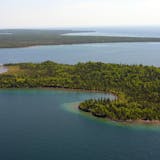ST. PETER, MINN. – Roberta Anton saw the monster cloud from 10 miles away, a dark beast that blotted out the world.
"It was black as sin," said Anton, a North Mankato resident who was living near St. Peter on March 29, 1998. "I thought, 'There's gonna be trouble in that sucker.' "
Minutes later, a tornado with winds up to 175 mph ripped through St. Peter, carving a path of destruction that forever changed the face of this scenic river town about 70 miles southwest of the Twin Cities.
The twister was one of more than a dozen spawned that day by a freakish "supercell" thunderstorm that cut a 60-mile-wide swath across the southern Minnesota prairie. It hit St. Peter about 5:30 p.m. on a Sunday, destroying more than 200 homes, damaging hundreds more houses and businesses, and ripping thousands of trees — an estimated 90 percent of the city's stock — from their roots.
Two people died and more than three dozen were injured in the massive storm — which, before hitting St. Peter, wiped out the tiny town of Comfrey, some 60 miles southwest, before heading northeast and battering the small towns of Le Center and Lonsdale. St. Peter alone sustained more than $120 million in property damage. The tornado was so powerful that debris from the city was found as far away as Rice Lake, Wis. — a distance of 125 miles.
Twenty years later, this city of nearly 12,000 residents on the banks of the Minnesota River is thriving. The town rallied and rebuilt, and later this week it will celebrate its resilience with a ceremony to thank those who helped the city recover.
"You're defined by how you respond when you're knocked down," said Todd Prafke, the city administrator. "St. Peter got up, and we decided we would be better."
March tornadoes are rare in Minnesota, so rare that before that fateful Sunday, only six other twisters had occurred in March in Minnesota's recorded history.



